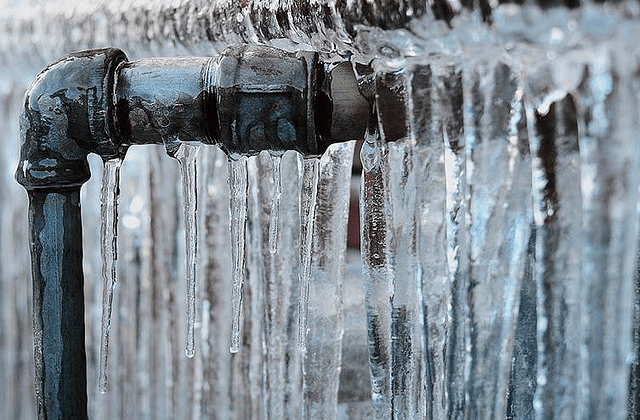Everybody has their own conception about Prevent Frozen Pipes .

Cold weather can damage your plumbing, particularly by freezing pipelines. Below's just how to stop it from occurring and what to do if it does.
Intro
As temperature levels decrease, the threat of icy pipelines rises, potentially bring about expensive repairs and water damages. Understanding exactly how to prevent icy pipelines is essential for homeowners in cold climates.
Prevention Tips
Shielding prone pipes
Cover pipes in insulation sleeves or utilize warmth tape to protect them from freezing temperatures. Focus on pipes in unheated or exterior areas of the home.
Home heating strategies
Maintain interior areas effectively warmed, particularly areas with pipes. Open up cupboard doors to permit warm air to flow around pipelines under sinks.
Exactly how to recognize icy pipes
Try to find reduced water circulation from taps, unusual smells or sounds from pipelines, and noticeable frost on exposed pipes.
Long-Term Solutions
Architectural changes
Think about rerouting pipelines far from exterior walls or unheated locations. Include additional insulation to attic rooms, basements, and crawl spaces.
Updating insulation
Invest in top notch insulation for pipelines, attics, and wall surfaces. Appropriate insulation helps preserve regular temperature levels and decreases the danger of icy pipes.
Safeguarding Outside Plumbing
Yard tubes and outdoor faucets
Separate and drain pipes garden hose pipes prior to winter season. Mount frost-proof faucets or cover exterior faucets with shielded caps.
Understanding Frozen Pipes
What causes pipes to ice up?
Pipelines freeze when exposed to temperature levels listed below 32 ° F (0 ° C) for prolonged periods. As water inside the pipelines ices up, it broadens, putting pressure on the pipeline walls and potentially triggering them to burst.
Risks and problems
Frozen pipes can bring about water interruptions, building damage, and pricey repair services. Ruptured pipes can flooding homes and create comprehensive architectural damage.
Indicators of Frozen Pipeline
Identifying icy pipelines early can prevent them from breaking.
What to Do If Your Pipes Freeze
Immediate actions to take
If you presume icy pipes, keep faucets open to ease pressure as the ice melts. Make use of a hairdryer or towels taken in warm water to thaw pipelines gradually.
Final thought
Stopping icy pipelines needs positive procedures and fast feedbacks. By recognizing the reasons, indications, and preventive measures, homeowners can safeguard their plumbing during winter.
6 Proven Ways to Prevent Frozen Pipes and Protect Your Home
Disconnect and Drain Garden Hoses
Before winter arrives, start by disconnecting your garden hoses and draining any remaining water. Close the shut-off valves that supply outdoor hose bibs and leave the outdoor faucet open to allow any residual water to drain. For extra protection, consider using faucet covers throughout the colder months. It’s also important to drain water from any sprinkler supply lines following the manufacturer’s directions.
Insulate Exposed Pipes
Insulating your pipes is an effective way to prevent freezing. Pipe insulation is readily available at home improvement stores and is relatively inexpensive. Pay close attention to pipes in unheated areas such as the attic, basement, crawl spaces, or garage. Apply foam insulation generously to create a buffer against the cold. You can also wrap your pipes in heat tape or thermostat-controlled heat cables for added warmth.
Seal Air Leaks
Inspect your home for any cracks or openings that could let in cold air. Seal any holes around the piping in interior or exterior walls, as well as the sill plates where your home rests on its foundation. Additionally, make sure to keep your garage door closed unless you’re entering or exiting. Leaving it open creates a significant air leak that can lead to frozen pipes.
Allow Warm Air Circulation
During cold snaps, it’s essential to allow warm air to circulate evenly throughout your home. Leave interior doors ajar to promote better airflow. Open kitchen and bathroom cabinets to help distribute heat consistently around the rooms. If you have small children or pets, be sure to remove any household chemicals or potentially harmful cleaners from open cabinets for safety.
Let Faucets Drip
A small trickle of water can make a big difference in preventing ice formation inside your pipes. When temperatures drop significantly, start a drip of water from all faucets served by exposed pipes. This continuous flow helps prevent the water from freezing. Additionally, running a few faucets slightly can relieve pressure inside the pipes, reducing the chances of a rupture if the water inside does freeze.
https://choateshvac.com/6-proven-ways-to-prevent-frozen-pipes-and-protect-your-home/

We had been shown that report on How To Avoid Freezing Pipes through an associate on another web property. Sharing is caring. Helping others is fun. Thanks so much for your time spent reading it.
Call
 Edward Furlong Then & Now!
Edward Furlong Then & Now! Tony Danza Then & Now!
Tony Danza Then & Now! Kirk Cameron Then & Now!
Kirk Cameron Then & Now! Atticus Shaffer Then & Now!
Atticus Shaffer Then & Now! Andrew McCarthy Then & Now!
Andrew McCarthy Then & Now!